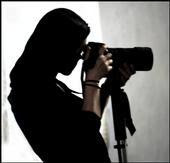Some images may be recovered or made better from camera shake or bad focus by a simple Photoshop sharpening technique. The results really depend on how badly the image is affected.
1. Open image and duplicate layer (Layers -> Duplicate Layer. Name your layer "Sharpening Mask")
2. Change blending mode of the "Sharpening Mask" to Luminosity (Layer -> Layer Style -> Blending Options. Select Blending Mode to Luminosity)
3. Unsharp image (Filter -> Sharpen -> Unsharp Mask. Select appropriate settings to taste. If image quality is severely degraded, amount is usually kept to higher numbers. Radius and Threshold values are usually kept very low (e.g. 1).
4. Duplicate "Sharpening Mask" layer, and apply Gaussian Blur filter to recover image quality.
5. Modify layer's opacity to your taste and apply Color blending mode to the layer (Layer -> Layer Style -> Blending Options. Select Blending Mode to Color).
6. Modify Curves/Levels adjustment to help bring out the detail.
7. Flatten layers to finalize image processing.
1. Open image and duplicate layer (Layers -> Duplicate Layer. Name your layer "Sharpening Mask")
2. Change blending mode of the "Sharpening Mask" to Luminosity (Layer -> Layer Style -> Blending Options. Select Blending Mode to Luminosity)
3. Unsharp image (Filter -> Sharpen -> Unsharp Mask. Select appropriate settings to taste. If image quality is severely degraded, amount is usually kept to higher numbers. Radius and Threshold values are usually kept very low (e.g. 1).
4. Duplicate "Sharpening Mask" layer, and apply Gaussian Blur filter to recover image quality.
5. Modify layer's opacity to your taste and apply Color blending mode to the layer (Layer -> Layer Style -> Blending Options. Select Blending Mode to Color).
6. Modify Curves/Levels adjustment to help bring out the detail.
7. Flatten layers to finalize image processing.





